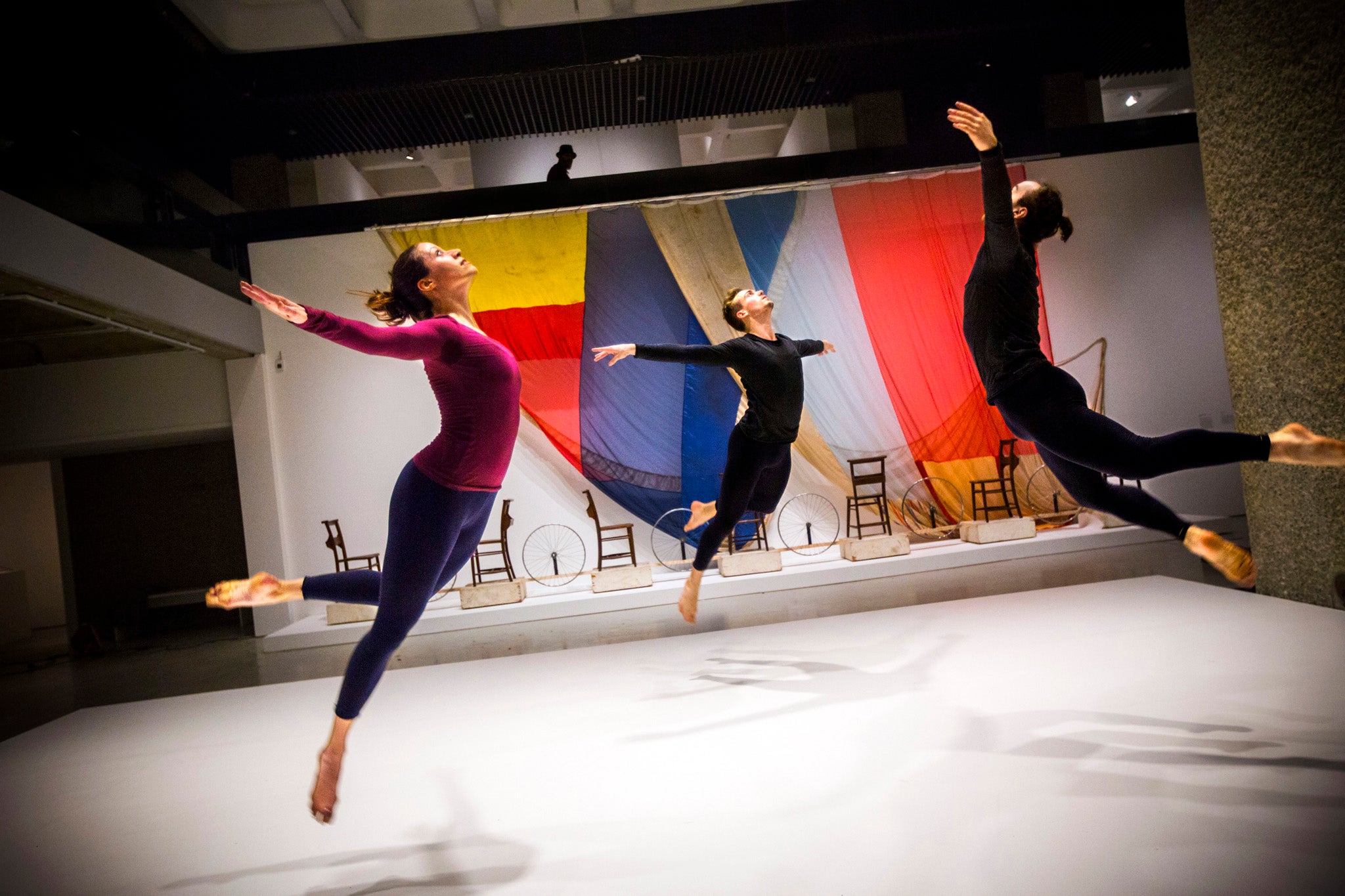The Bride and the Bachelors: Duchamp with Cage, Cunningham, Rauschenberg and Johns, Barbican Art Gallery, London

Your support helps us to tell the story
From reproductive rights to climate change to Big Tech, The Independent is on the ground when the story is developing. Whether it's investigating the financials of Elon Musk's pro-Trump PAC or producing our latest documentary, 'The A Word', which shines a light on the American women fighting for reproductive rights, we know how important it is to parse out the facts from the messaging.
At such a critical moment in US history, we need reporters on the ground. Your donation allows us to keep sending journalists to speak to both sides of the story.
The Independent is trusted by Americans across the entire political spectrum. And unlike many other quality news outlets, we choose not to lock Americans out of our reporting and analysis with paywalls. We believe quality journalism should be available to everyone, paid for by those who can afford it.
Your support makes all the difference.The dancing you hear in the Barbican’s new Duchamp exhibition may not be the dancing you see. Philippe Parreno’s exhibition design includes sound recordings of Merce Cunningham dances, feet stamping the floor, played at random intervals. When real live dancers arrive to perform other Cunningham works, they often have a soundtrack of other dancing feet.
It suits Cunningham, one of the twentieth century’s major choreographers, who made dances where design, dance and music were created separately. He often staged compilation “Event” performances in unusual settings, from the Piazza San Marco to Grand Central Station. At the Barbican Art Gallery, a decent-sized stage is marked off, framed by paintings and set designs by the artist Robert Rauschenberg. Inches away from their audience, dancers unfold through grandly serene poses or scamper through quick, darting steps.
When this exhibition was staged in Philadelphia, it had performances by former members of Cunningham’s own company, which closed after his death in 2009. In London, a new generation of dancers take on his work, staged by Jeannie Steele. Students and graduates of London Contemporary Dance School dance during the run; there will also be events by the Rambert and Richard Alston companies.
The young dancers step boldly into Cunningham’s demanding works, with sections from Changing Steps, Roaratorio and other dances. Harlan Rust moves with superb weight and presence, shaping slow solos into long, rich phrases. He launches into a turn, one leg swung high and steady, and simply keeps winding, curling tighter and tighter.
Fabiola Santana floats through a dreamy sequence of steps, then bursts into a flurry of speed – on one side only. Her right foot beats quick circles in the air, her right arm ripples and undulates, while the left side of her body stays calm and steady. It’s a lovely performance of a brilliantly quirky solo.
Cunningham’s dances combine sculptural beauty with an air of people going about their business, caught up in their own concerns. People come and go in the gallery, onstage as well as off. A man crouches close to the floor, stamping or thumping it with one hand. A woman dances over his legs, stepping astride him and hopping back.
Some sequences are imposingly abstract. Others suggest relationships. In one motif, a man lies on his front, chin on hands. A woman perches on his bottom, then leans forward to touch his face. Each time she does it, he kicks his feet into the air: a gentle, happy reaction.
Dance performances on Thursdays and weekends until 9 June. Box office: 0845 120 7550
Join our commenting forum
Join thought-provoking conversations, follow other Independent readers and see their replies
Comments